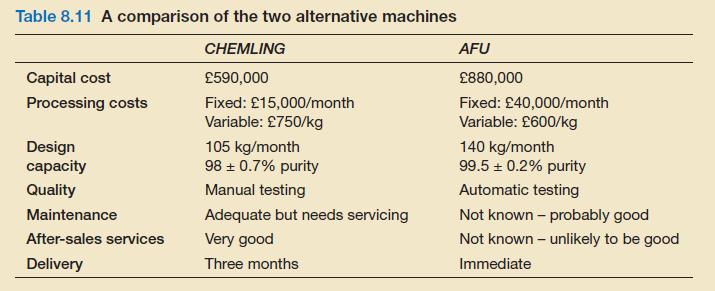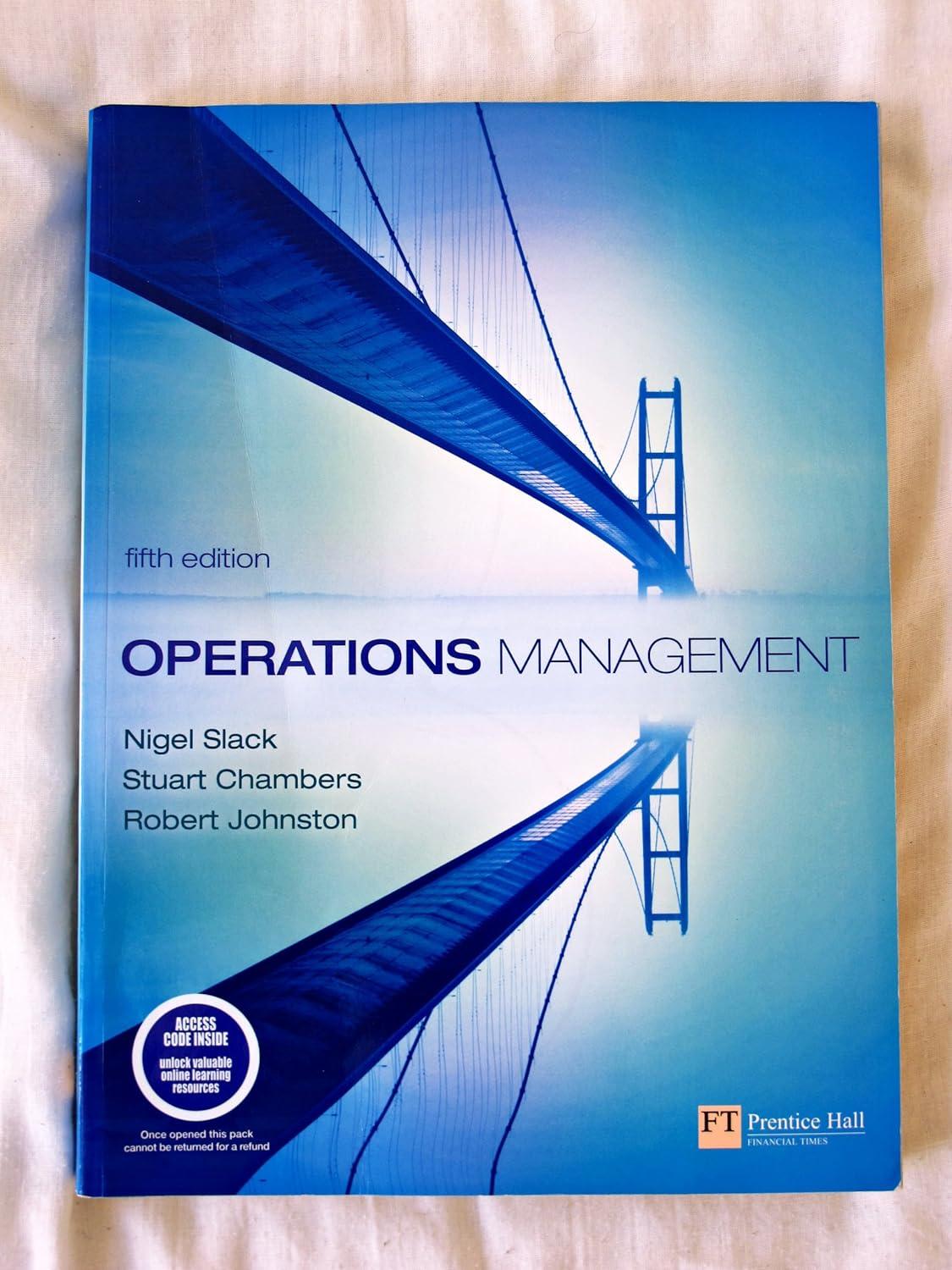Dr Rhodes was losing his temper. 'It should be a simple enough decision. There are only two
Question:
Dr Rhodes was losing his temper. 'It should be a simple enough decision. There are only two alternatives. You are only being asked to choose a machine!' The management committee looked abashed. Rochem Ltd was one of the largest independent companies supplying the food-processing industry. Its initial success had come with a food preservative used mainly for meatbased products and marketed under the name of 'Lerentyl'. Other products were subsequently developed in the food colouring and food container coating fields, so that now Lerentyl accounted for only 25 per cent of total company sales, which were slightly over £10 million.
The decision
The problem causing such controversy related to the replacement of one of the process units used to manufacture Lerentyl. Only two such units were used both were 'Chemling' machines. It was the older of the two Chemling units which was giving trouble. High breakdown figures, with erratic quality levels, meant that output level requirements were only just being reached. The problem was, should the company replace the ageing Chemling with a new Chemling or should it buy the only other plant on the market capable of the required process, the AFU unit? The chief chemist's staff had drawn up a comparison of the two units, shown in Table 8.11.
 The body considering the problem was the newly formed management committee. The committee consisted of the four senior managers in the firm: the chief chemist and the marketing manager, who had been with the firm since its beginning, together with the production manager and the accountant, both of whom had joined the company only six months before.
The body considering the problem was the newly formed management committee. The committee consisted of the four senior managers in the firm: the chief chemist and the marketing manager, who had been with the firm since its beginning, together with the production manager and the accountant, both of whom had joined the company only six months before.
What follows is a condensed version of the information presented by each manager to the committee, together with their attitudes to the decision.

Questions
1. How do the two alternative process technologies (Chemling and AFU) differ in terms of their scale and automation? What are the implications of this for
Rochem?
2. Remind yourself of the distinction between feasibility, acceptability and vulnerability discussed in Chapter 4. Evaluate both technologies using these criteria.
3. What would you recommend the company should do?
Step by Step Answer:

Operations Management
ISBN: 9780273708476
5th Edition
Authors: Nigel Slack, Stuart Chambers, Robert Johnston





